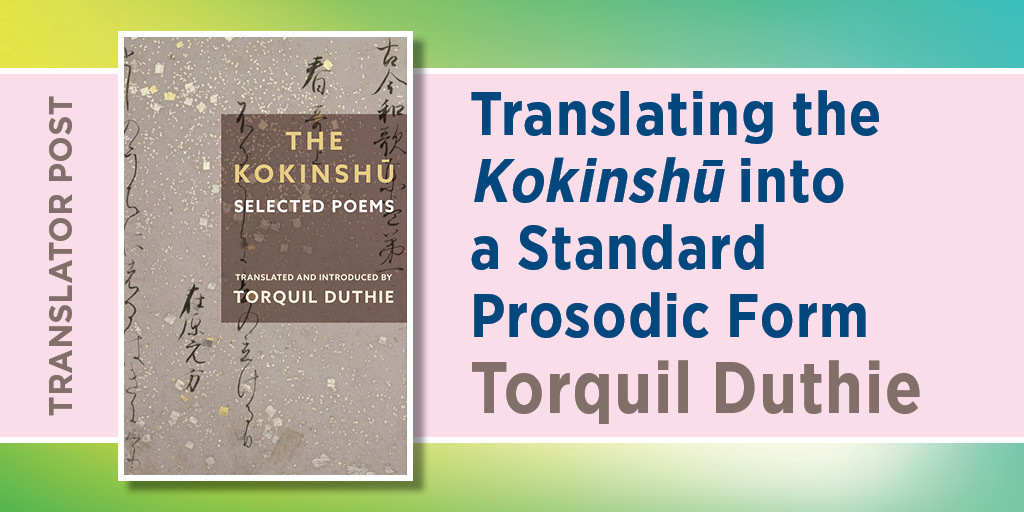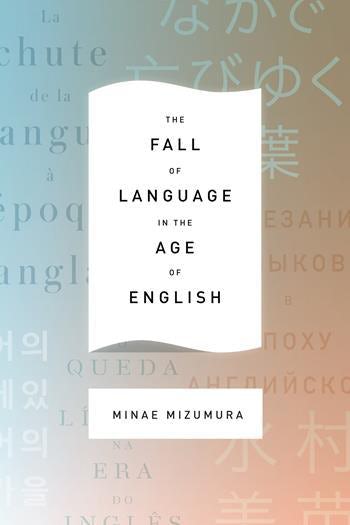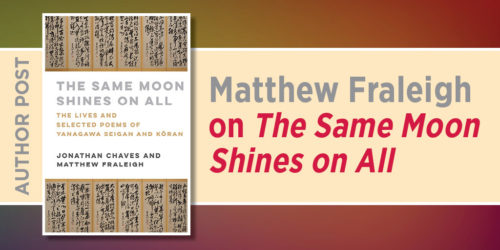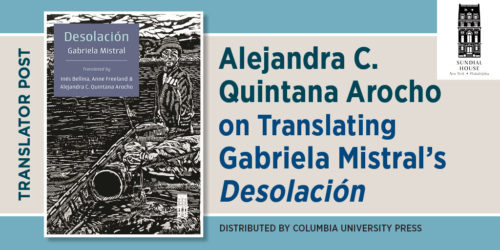Translating the Kokinshū into a Standard Prosodic Form
Torquil Duthie

The Kokinshū was always meant to become a classic. The ambition of its compilers was to make waka (vernacular Japanese poetry) the preeminent literary practice of the Japanese imperial court. Yet surely even they would have been surprised by the extent of their success. From shortly after its completion to the end of the nineteenth century, the Kokinshū was the cornerstone for the waka tradition. It provided normative models for poetry composition and for the compilation of another twenty imperial anthologies. It was foundational for later forms of vernacular poetry such as linked verse and haikai (which would develop into the modern haiku). And it played a central role in the vernacular prose literary writing that developed from poetry collections and commentary. The Kokinshū’s enduring status is attested by the more than three hundred commentaries produced from the twelfth to the twentieth centuries. This vast exegetical tradition led in turn to many of its poems becoming the source material for all kinds of other literary forms, including Nō theater and late medieval popular fiction.
Appropriately for such an important text, there are several existing English renditions of the Kokinshū, including two complete translations. Many of these are excellent. What led me to attempt a different approach was the realization that existing translations were focused on crafting individual translations of each poem. I wanted to translate the common language shared by the poems in the anthology.
An important part of the appeal of the Kokinshū is that it was purposefully created to be an ideal object of exegesis. Many poems in the collection revel in ambiguity—of syntax, meaning, tone—and seem designed to challenge the reader to make sense of them. The organization of the Kokinshū adds to this challenge. In part because they are so brief, waka poems do not really convey meaning as self-contained artifacts but rather in dialogue with other poems written on similar topics. How one understands each individual poem will greatly depend on the degree of one’s familiarity with other poems. Moreover, the Kokinshū anthology encourages readers to interpret its poems in relation to each other by organizing them into sequences of themes. Any given poem often appears to be echoing, responding to, or even contradicting an earlier composition. In a nutshell, the Kokinshū is not so much the sum of its individual poems, but rather the poetic text created by the relationships between poems. It is this larger poetic text that my translation attempts to render in English.
To recreate the sense of poems speaking to each other, I needed all my translations to sound and feel like they were in a standard form. This meant creating a common rhythmic signature across the translations. Previous attempts to do this focused on replicating the purely syllabic prosody of the original Japanese text. To my ear at least, these attempts are not very successful, since the syllable by itself is not a unit of rhythm in English. Even if two different English translations both follow the waka five-line pattern in 5/7/5/7/7 syllables, they can sound very different rhythmically depending on how many stressed or unstressed English syllables they use per line. Instead, I created a form that transposed the classical Japanese pattern of 5–7 syllable combinations into a loose iambic pentameter pattern of 4/6 or 4/7 syllables. This results in the poems sharing a common rhythmic signature that has a more natural feel in English while approximating the original Japanese form. For instance, this is poem #205, from the first volume of “Autumn” poems in the Kokinshū:
In the evenings
when the cicadas cry,
no one visits
this hut up on the mountain
except for the autumn wind
Several poems later, in poem #214, we find the following variation on the theme of the lonely mountain hut in autumn:
The mountain hut
is especially lonely
in the autumn
awaking to the sound
of the cry of the deer
These two treatments of the theme are quite different, but they share a common form and rhythmic phrasing both in the individual measures and in the combinations of short and long measures. This makes it possible to instinctively perceive them as forming part of the same poetic context.
A second challenge was to recreate the deliberately restricted vocabulary of the Kokinshū in English, while avoiding the temptation of deploying multiple synonyms for recurring key terms. When we encounter the same melodic sequences or harmonies in succession, it can feel repetitive if we are exclusively focused on the merits of each individual piece in isolation. But the relationships between poems that make up the poetic text of the Kokinshū depend on these repetitions. For example, in the “Winter” volume, we find poem #315, which is a variation of (or perhaps a response to?) poem #214:
The mountain hut
is all the more lonely
in the winter
when people stay away
and the grass is all withered
In order to perceive the relationship between the two poems, it is essential to preserve the similarities of diction. But it is just as important that poems #214 and #315 sound like different lyrics sung to the same melody, so that readers are reminded of the earlier poem through sound and rhythm as much as through diction.
A more subtle example is the following poem from the fifth “Love” volume. Poem #772 echoes poem #205, cited above:
“Perhaps he’ll come?”
but I know he will not
as the cicadas
are crying in the evening
and I still stand here waiting.
We can read this poem as transforming the autumn motif in poem #205 about the lonely hut where the cicadas cry at dusk into the more personal context of a love poem with an overt protagonist waiting for their lover who is not coming back. Or is it perhaps the other way around, and poem #772 is simply developing the earlier seasonal poem’s veiled suggestion of a love affair that has ended? Either way, the possibility of understanding this dialogue between poems requires their shared formulaic diction and common rhythmic pattern to be conveyed in English translation.
I have been translating and retranslating individual poems in the Kokinshū for over twenty years. As one might expect, my readings of the same poems have changed and varied greatly over this time. This continues to be the case today: I re-read a translation and am suddenly struck by something I hadn’t noticed before. I discover phrases I would like to retranslate, or I change my mind about the interpretation of individual poems. Will this ever stop?
Probably not. This is, after all, precisely how the Kokinshū was designed to be read, and it would be strange to pretend that the translation of any particular poem could be fixed if its interpretation cannot. What I do think will remain unchanged, however, is my sense of the relationships between poems in the anthology. In that regard, I do have some confidence that my English translation manages to convey something of the poetic language and world of the Kokinshū.
Torquil Duthie is professor of Japanese literature at the University of California, Los Angeles. He is the translator of The Kokinshū: Selected Poems.








